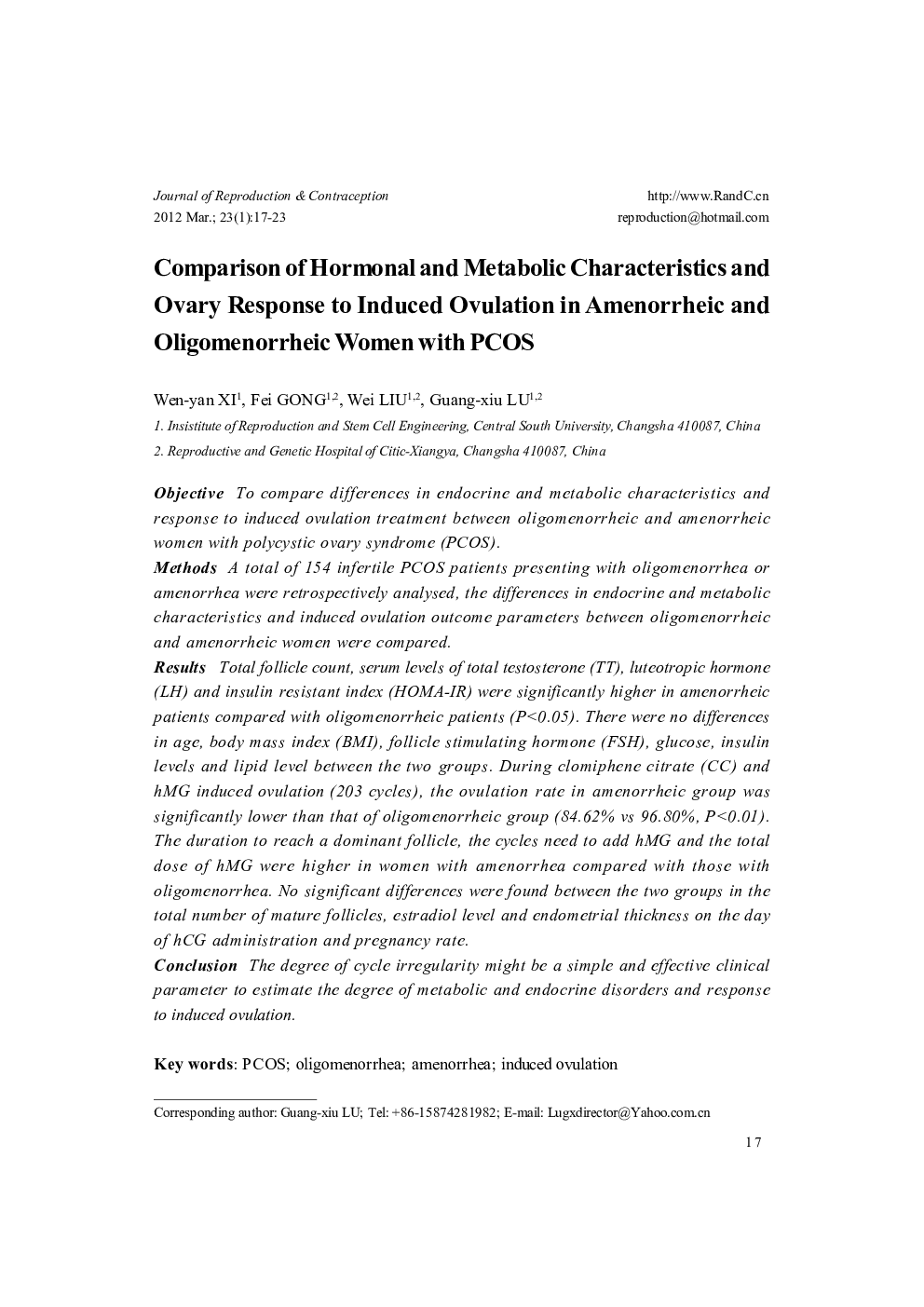| Article ID | Journal | Published Year | Pages | File Type |
|---|---|---|---|---|
| 3963416 | Journal of Reproduction and Contraception | 2012 | 8 Pages |
ObjectiveTo compare differences in endocrine and metabolic characteristics and response to induced ovulation treatment between oligomenorrheic and amenorrheic women with polycystic ovary syndrome (PCOS).MethodsA total of 154 infertile PCOS patients presenting with oligomenorrhea or amenorrhea were retrospectively analysed, the differences in endocrine and metabolic characteristics and induced ovulation outcome parameters between oligomenorrheic and amenorrheic women were compared.ResultsTotal follicle count, serum levels of total testosterone (TT), luteotropic hormone (LH) and insulin resistant index (HOMA-IR) were significantly higher in amenorrheic patients compared with oligomenorrheic patients (P<0.05). There were no differences in age, body mass index (BMI), follicle stimulating hormone (FSH), glucose, insulin levels and lipid level between the two groups. During clomiphene citrate (CC) and hMG induced ovulation (203 cycles), the ovulation rate in amenorrheic group was significantly lower than that of oligomenorrheic group (84.62% vs 96.80%, P<0.01). The duration to reach a dominant follicle, the cycles need to add hMG and the total dose of hMG were higher in women with amenorrhea compared with those with oligomenorrhea. No significant differences were found between the two groups in the total number of mature follicles, estradiol level and endometrial thickness on the day of hCG administration and pregnancy rate.ConclusionsThe degree of cycle irregularity might be a simple and effective clinical parameter to estimate the degree of metabolic and endocrine disorders and response to induced ovulation.
